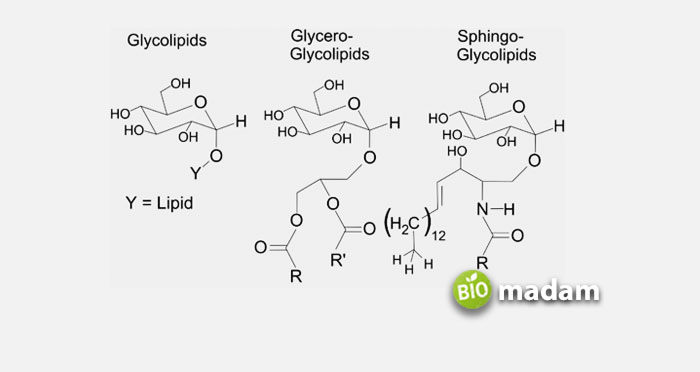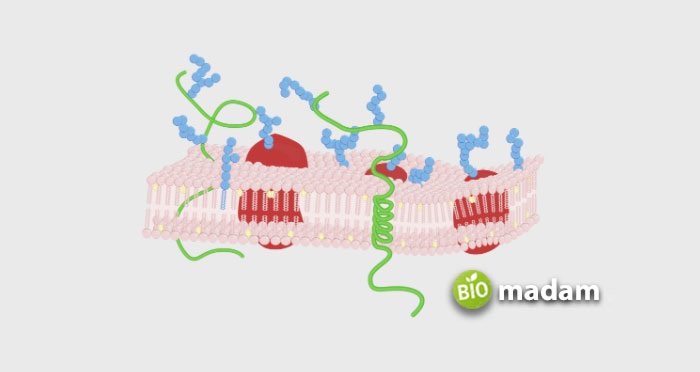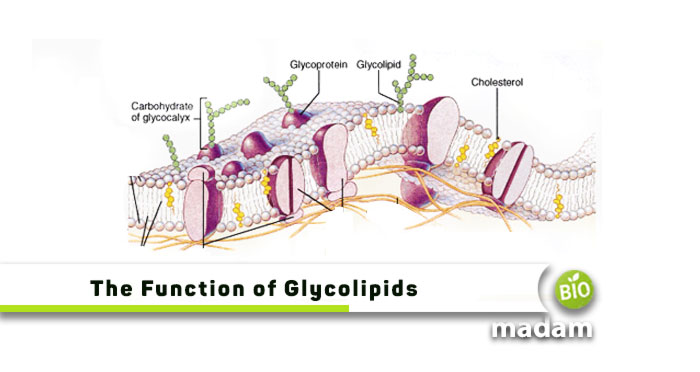The cell membrane in an animal cell is the outermost layer, while plants have a cell wall beside the cell membrane. The cell membrane comprises different molecules, including glycolipids, proteins, and carbohydrates. Their concentration in the cell membrane indicates the importance of their multiple roles. Some important glycolipids functions in the cell membrane include adhesion, signal transduction, and membrane integrity. Let’s tell you more about glycolipids and their functions in the cell membrane.
What are Glycolipids?
Animal and plant eukaryotic cells contain glycolipids as a crucial component of the cell membrane. Glycolipids are lipid molecules with a carbohydrate moiety. Glycolipids, lipid glycoconjugates, are typically located on the outer leaflet of eukaryotic cell membranes. They play an essential role in membrane homeostasis and in facilitating cell-cell interactions. Glycolipids also play a role in facilitating the movement of viruses, bacteria and other parasites into cells.
Structure of Glycolipids
A monosaccharide or oligosaccharide linked to a lipid molecule is the defining characteristic of a glycolipid. Most lipids in cellular membranes are either glycerolipids comprising glycerol or sphingolipids made up of a sphingosine backbone.
Lipid Part
The lipid part of a glycolipid consists of a hydrophobic tail and a hydrophilic head. The hydrophobic tail is a long-chain fatty acid or a sphingosine molecule, while the hydrophilic head is typically a polar or charged group attached to the hydrophobic tail. This head group can be a simple alcohol, a phosphate group, or an amino sugar.
Carbohydrate Part
The carbohydrate component of a glycolipid consists of one or more sugar molecules that have a covalent bond with the lipid moiety. The ligand components of glycolipids are the saccharides that are covalently bound to the polar head groups on the outside of the cell; these saccharides share the polarity of the lipids and are thus soluble in the aqueous solutions surrounding the cell.
Lipids and saccharides can form a glycosidic connection, which results in a glycoconjugate. The sugar’s anomeric carbon combines with a free hydroxyl group in the lipid backbone. The structure of the molecules they attach to determines the shape of the saccharides they form.

Functions of Glycolipids in Cell Membrane
Glycolipids play essential roles in cell-to-cell communication, recognition, and signaling. Here are some of the functions of glycolipids in detail:
Cell Recognition and Signaling
Glycolipids play an important role in cell recognition and signaling, essential for many biological processes, including immune response and tissue development. They act as markers on the cell surface, allowing cells to recognize and interact with each other. For example, blood group antigens are glycolipids that determine an individual’s blood type and are crucial in determining whether or not a blood transfusion is successful.
Membrane Stability and Fluidity
Glycolipids help maintain the structural integrity and fluidity of the cell membrane. The lipid component of the glycolipid anchors the molecule in the membrane, while the carbohydrate component extends outward, creating a protective barrier that helps to stabilize the membrane.
Signal Transduction
Glycolipids are involved in signal transduction, the process by which a cell converts a chemical or physical stimulus into a cellular response. They act as receptors for various signaling molecules, such as growth factors, hormones, and neurotransmitters.

Pathogen Recognition
In addition to their roles as extracellular membrane components, glycolipids are also present in the membranes of various intracellular organelles, including the endoplasmic reticulum, mitochondria, and the Golgi apparatus. Glycolipids, for instance, can act as receptors for other molecules, including proteins, enzymes, and immune system cells.
The immune system relies heavily on glycolipids to determine whether a cell is a self or non-self. An immune response is triggered whenever the body identifies an antigen or pathogen to eliminate the risk of disease. Glycolipids recognize and respond to pathogens, such as bacteria and viruses. They act as receptors for these pathogens, allowing the immune system to recognize and destroy them.
Energy Storage
Energy storage is a function of some glycolipids, like gangliosides. Gangliosides are in the nervous system and essential for proper brain function. They play a role in energy metabolism and regulate ion channels.
The Bottom Line
Glycolipids are an essential component of the plasma cell membrane in plants and animals. Glycolipids are lipid moieties with an attached carbohydrate part. The main functions of glycolipids in the cell membrane include cell recognition and signaling, membrane stability and fluidity, signal transduction, and energy storage. They also contribute to pathogen recognition to identify bacteria and viruses and prevent infections. Their diverse functions make them essential for many biological processes and attractive targets for drug development.
FAQs
What is the difference in function between glycoprotein and glycolipid?
Glycoproteins and glycolipids are both found in the cell membrane. Glycolipids have a major role in energy storage and facilitating cellular recognition. On the other hand, glycoproteins act as receptors for chemical signaling. You may also find glycoproteins in the blood.
What are the properties of glycolipids?
Glycolipids are important biomolecules in the cell membrane. They have a lipid and a carbohydrate component. The function of carbohydrates in cell membrane is that it acts as a polar region, while the lipid part is a non-polar one. This property of having both hydrophilic and hydrophobic ends is known as an amphipathic characteristic, making it an important component in the cell membrane.
Is glycolipids a transport protein?
As the name indicates, glycolipids are not transport proteins. However, Glycolipid transfer proteins (GLTPs) are present in the cell membrane that facilitates the transfer of glycolipids.
What are glycolipids made of?
Glycolipids mainly comprise lipid and carbohydrate molecules. They may also contain a glycerol group or sphignolipids. These molecules are joined together by a glycosidic linkage.
What are the three types of glycolipids?
Glycolipids can be categorized into three types: glycosphingolipids (GSLs), glycosylphosphatidylinositol (GPIs), and glycoglycerolipids. The glycosphingolipids (GSLs) are formed by the combination of Gangliosides and cerebrosides classes.
Are glycolipids cell markers?
Glycolipids act as functional molecules and markers in the stem cells to act as important biomolecules within the cell. One of their primary functions is to act as recognition sites for cell-cell interactions. The carbohydrates typically bind to lectins of the neighboring cells.
What is an alternate name for glycolipids?
Acylglycerols, prenols, and ceramides are also glycosyl derivatives of lipids like glycolipids. They all collectively make up glycoconjugates.

Anna has completed her degree in Pharmacy from the University of Hawaii. She is serving as a research assistant in a pharmaceutical company. She had a great interest in writing blogs, traveling to different parts of the US, and trying delicious recipes in her spare time.

